- Frymaster Parts Guide - December 31, 2021
- Best Vulcan Fryer Guide For The Commercial Place - November 26, 2021
- Robot Coupe Food Processor Model Guide - November 16, 2021
Are you a passionate home-brewer with dreams of opening your own cafe? If so, then you’re in the right place. Starting a cafe – or any business for that matter – is an exciting venture, but prepare for lots of learning, lots of trial and error, and lots of tough decisions.
Nonetheless, anyone who has seen how many coffee shops line the streets of major cities these days, knows just how lucrative and popular your new cafe could become. So, let’s dive right into how to start a cafe and what it takes to make that dream a reality.
Types of Cafe
The word “cafe” or “coffee house” originated in Europe. The name was given to small-scale public houses specializing in serving espresso or other hot beverages with light snacks such as muffins, bagels, or pastries. These days, cafes are often much more than that.
Many serve full-scale breakfast, brunch, or lunch menus, have an area specifically for people to work on laptops, or are sometimes used by local artists (particularly painters) as a studio space.
There are many different types of cafes, from small, grab-and-go roasters with limited space to large global chains where people gather to work, study, and enjoy a drink. When starting a new cafe, it’s essential to do the proper groundwork and that you have a clear understanding of what type of café business you want.
Let’s look into a few of the most popular types of cafes:
Cafe Bakery
A cafe bakery is like a fancy regular bakery. These tend to be rather boutique and much more specialized coffee houses than your typical high-street chain.
They usually have a very stylish design and focus on displaying their bread, cakes, and quality coffee beans as much as possible. They also offer indoor seating, so customers can eat their pastries and freshly brewed coffee on site.
Co-Working Cafe

If you’ve ever worked remotely and needed a break from the home office, then a co-working cafe might be just what you need. This type of establishment provides a relaxing, distraction-free working environment, complete with desks, free wifi, access to power outlets, and a delicious supply of fresh drinks and food only an order away.
This type of café is aimed at home-based professionals like writers, working students, or freelancers. It has to be quite a quiet, or soothing environment, with good lighting, and usually has a contemporary modern-office-style design.
Themed Cafe
A themed cafe can technically be whatever you want it to be. You could base your design on a country, on a specific style of decor (Parisian, vintage, rustic, indoor garden), around a film or TV show, around an animal – I bet you’ve heard of cat cafes – or any other quirky idea you could think of.
The great thing about themed cafes is that they spark curiosity. People hear about a giraffe-themed cafe and want to know more. It also instantly builds you a brand and makes sticking to that brand a whole lot easier.
Grab-and-go Café
This is effectively the drive-thru of the cafe world. Grab-and-go cafes are exactly what they seem; somewhere you can grab a quick cup of coffee (either a shot of espresso to drink at a bar or a takeaway cup), and be on your way.
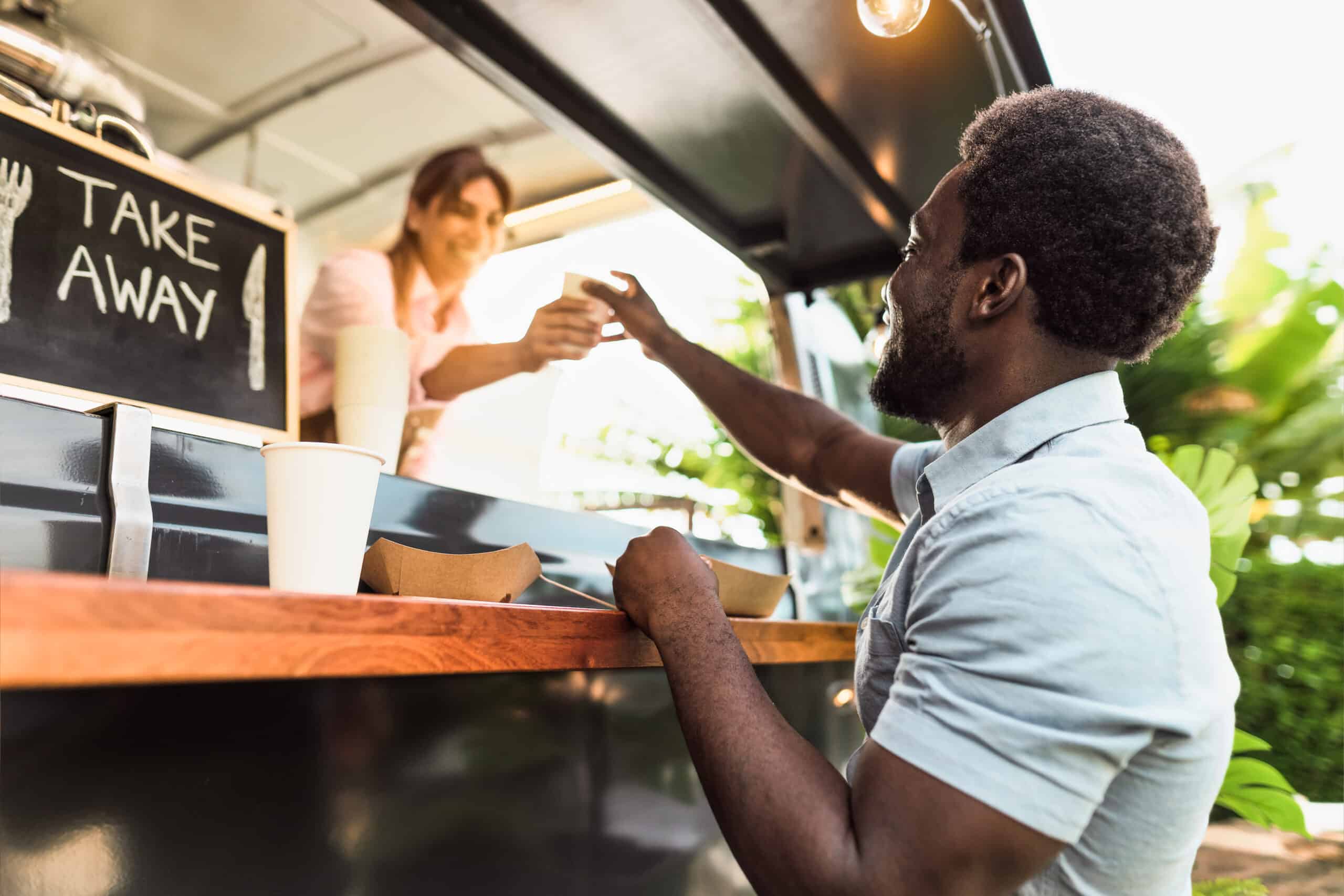
They’re perfect for busy professionals who don’t have time to sit down. They sometimes have seats but they’re usually just fairly uncomfortable bar stools for people to wait on while their orders are being prepped – they’re not particularly inviting.
A similar thing can be said for the decor. It’s usually much simpler than sit-down cafes. Grab-and-go cafes aren’t designed for people to stay, so the decor doesn’t have to be as appealing. As a result, they’re also much more cost-effective. They sometimes serve food like takeaway sandwiches and snacks alongside their drinks.
Corporate Café
Costa and Starbucks are great examples of corporate cafes. They are built on a ready-made identity and are usually one of hundreds of restaurants littered across a country or the globe. They are trim, proper, and polished – with branding, slogans, and wall art repeated over and over.
Whilst, if they take off, they’re likely to make you a millionaire, if you’re looking to start a corporate cafe, then prepare to be in it for the long haul. Worldwide chain restaurant definitely doesn’t happen overnight.
How to Start a Cafe
So, now that we’ve explored a few of the types of cafes you could start, let’s dive right into how to get your new business off the ground.
Research and Business Plan
A business plan is one of the most important parts of starting a new company. If you’re serious about starting a cafe, this should be your first step.
Your business plan should cover how much money you need, what your cafe will cost year-round, any other expenses (for example, hiring employees), as well as marketing strategies and financial projections. The best way to be successful at running your own café is with detailed planning that covers every inch from finances, location choice & construction plans down to seating plan specifications.
The following are the topics that you will need to cover when writing your cafe business plan:
- Company overview – This includes the name of your business, what it sells, and a general description.
- Market analysis – Evaluate the competition in your industry. What’s in demand and where can you fit in?
- Business offerings – How will you provide value to your customers?
- Management plan – This includes the responsibilities of each position you hire for and the overall ownership structure.
- Marketing strategy – How will you market your new cafe? How will you stand out from the competition? What is your advertising budget to help make this business a success?
- Financial projection – How do you intend to measure the success of your business? You’ll also need to compare your outgoings to predicted earnings.
Get Loans and Sort Finances
A successful business starts with the right financials.

Whether you’re starting a food truck or opening up a Michelin star diner, there’s an enormous cost to get it off the ground and keep it running smoothly.
These costs include leasing space for your new café – but also insurance, ingredients for all those pastries, and a LOT of coffee beans. Plus how much do you need to spend on kitchen equipment? And don’t forget about advertising!
You’ll want to make sure every dollar is allocated properly so when things start picking up, they stay afloat successfully without any major hiccups along the way. Unless you have bucket-loads of savings, then borrowing is the best way forward here. There are a few options for this: small business loans, commercial loans, and business lines of credit.
- Business loans – A business loan can be your cheapest option to start a cafe. You borrow a predetermined amount of money, and then make monthly payments on the loan until it’s paid off.
- Commercial loans – Commercial loans are often used for bigger purchases. They may be secured by collateral and have a low-interest rate but it often takes some time for the money to become available.
- Business Lines of Credit – Business owners often use a credit line to fund a new business. However, the initial application process can be long and certain requirements must be met for you to be approved.
Find a Location
Choosing a location for your cafe is a little like choosing your first house: challenging, but also kinda fun! You’ll need to think about how close the cafe is to residential areas, how many other businesses are nearby, and how much foot traffic you’ll get.
You’ll also need to pair your location with the type of cafe you want to start. For example, if you’re starting a co-working cafe, then the busiest area of town might not be ideal for workers looking for some peace and quiet. However, for a grab-and-go cafe, a busy street corner might be perfect.
Before you make up your mind on your location, as yourself:
- Do you have enough space?
- Do you need a central location to reach your target market?
- How close are you to public transportation or parking spaces?
- How close are you to your suppliers, such as wholesalers for goods and ingredients?
- How safe is the area? What are the crime rates?
- What are the health and safety regulations in the area?
- How much competition do you have nearby?
Whether you’re looking to rent or buy, once you’ve picked a location the lease will be the next thing to tackle. If you are renting, a rental lawyer can help lessen any potential headaches by dealing with the negotiation work and drafting up tenant rights. Be sure not to leave any stone unturned when getting legal assistance – it could come back to bite you!
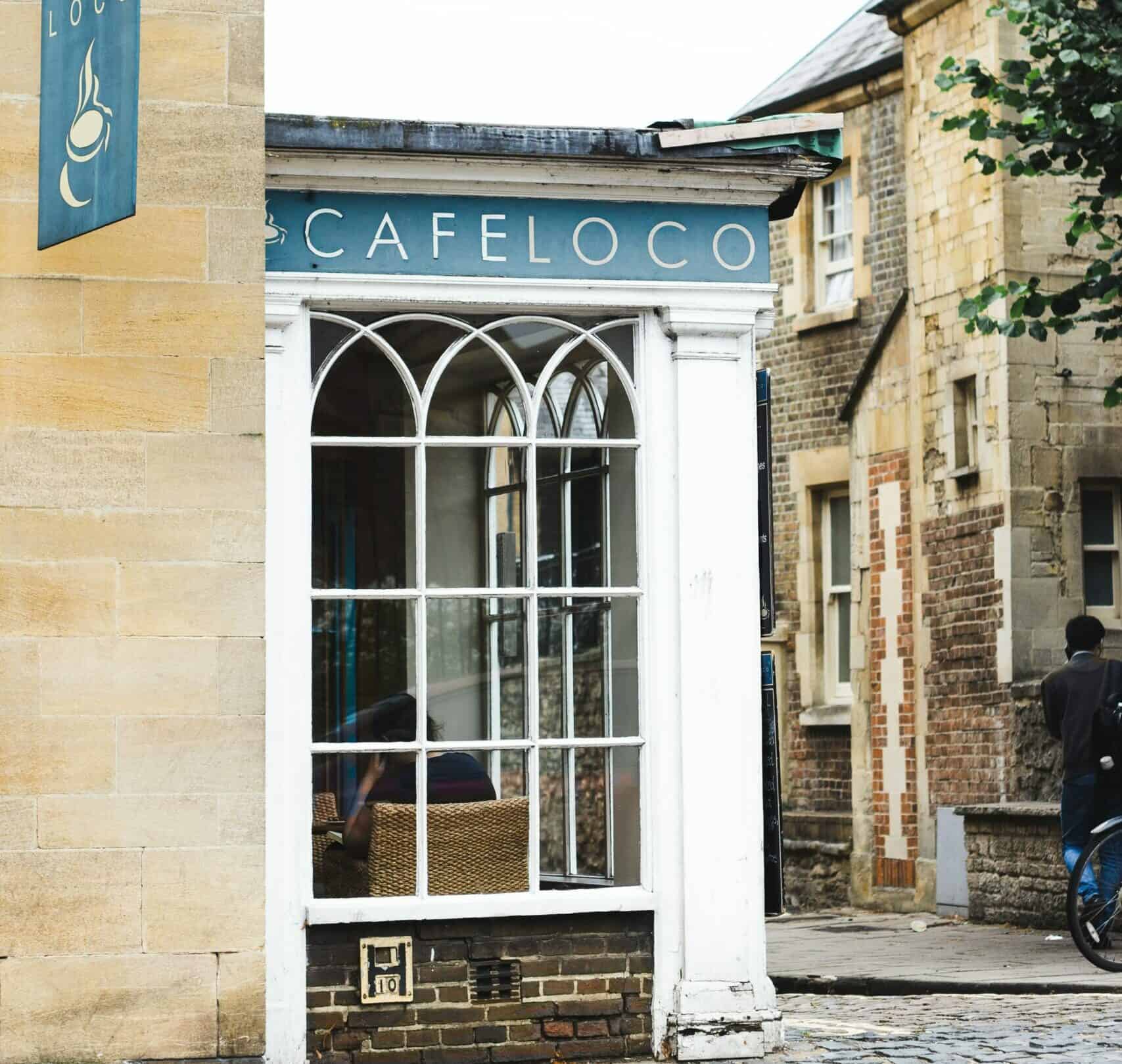
Deal with the Legalities
Speaking of legalities, it’s not just the lease you’ll need to think about.
The hospitality industry is rigorously regulated. There are a few permits and licenses that you’ll need before you can legally open your cafe doors.
Make sure you do your research to find out what the laws are in your area and consult with a lawyer before starting your business.
Design your Layout
Next comes the fun part: designing your layout.
This will depend on the type of cafe you have – if you have a theme, then you may want a dedicated centerpiece, whereas if you’re going for a grab-and-go cafe, you’ll likely need several display counters and open fridges.
Front of House
The front of the house needs to be the perfect combination of visually appealing and practical. You’ll need a counter for serving customers, a spacious table layout, and somewhere to display your products.
The front-of-house design should be given a lot of thought; customers are more likely to return if they enjoy the aesthetic.
So, what do you envision when you think of your new cafe? Whether it’s modern, retro, sophisticated, or family-focused, it will need to be geared towards the customers you want and your target audience (all part of the business plan we went through earlier). Try to understand their tastes and design your cafe with them in mind.
Back of House
The back of the house may not seem like much, but it’s where a lot of the magic happens. You’ll likely need more than just an oven or stovetop with some pots and pans. Many of the things that go into running a successful cafe happen back of the house, so it also needs to be practical, well designed, and clean.
Of course, this will also depend on the products you’re selling. If you’re just selling coffee and pre-packaged sandwiches, you might not need a kitchen at all. In this case, a storage cupboard full of coffee beans might be enough. Whereas, if you want to start a bakery cafe or serve a selection of hot food on your menu, then the back of the house will require a lot more thought and a lot more expense.
Order your Equipment
So, it’s now time to order your equipment. Kitchen or not, you’ll need a lot more than coffee beans to get a new cafe off the ground. These are some of the items to add to your shopping list:
High-quality espresso machine
A quality espresso machine will be the heart and soul of your cafe. So many drinks start with a shot of espresso: latte, cappuccino, flat white, and even an iced coffee.
A good espresso machine will last for years and produce consistently excellent coffee that will keep costumes coming back. So, it’s worth investing in a good espresso machine – even though the price might sting a little.
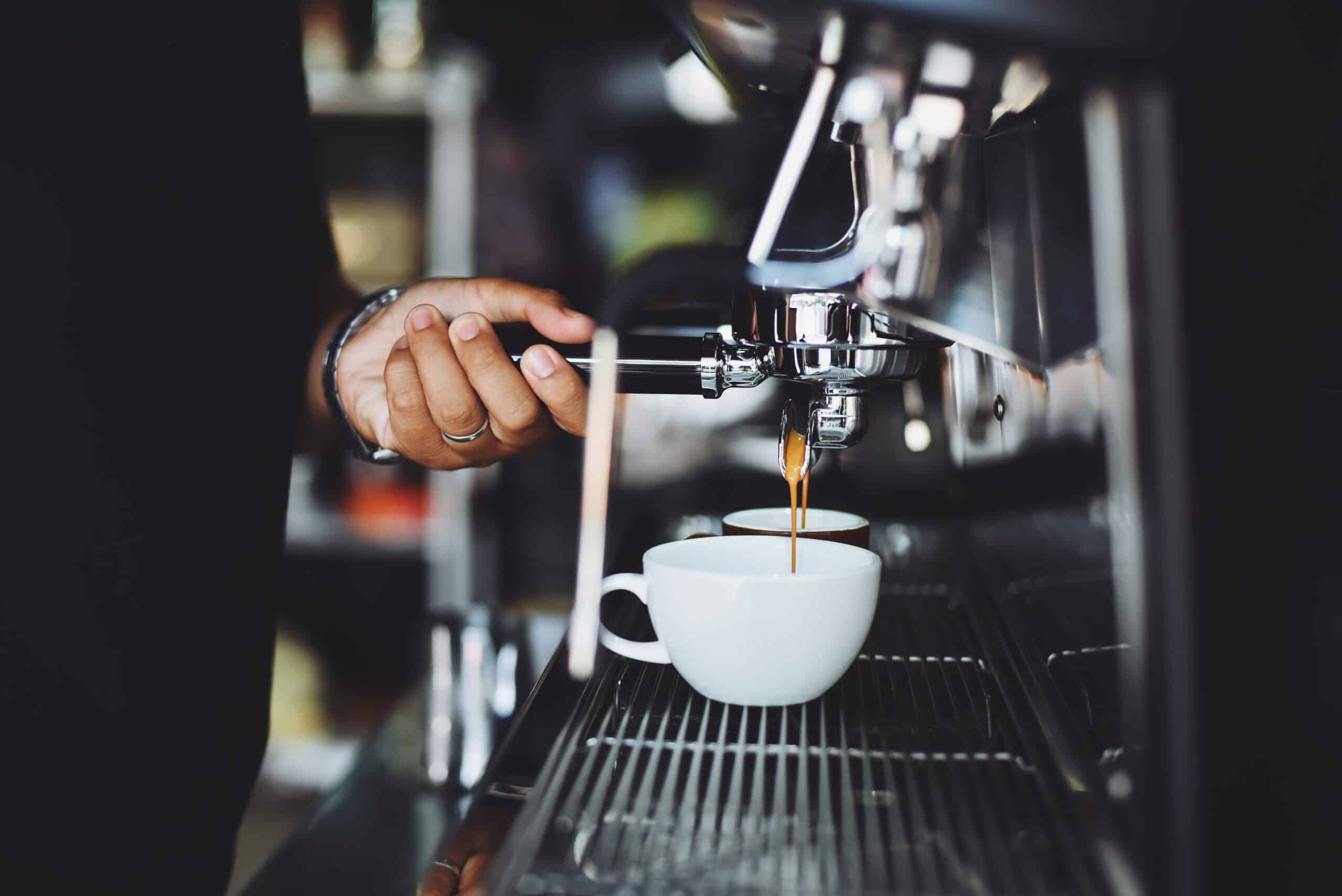
Automatic drip coffee makers
Standard black coffee will probably make up a big portion of your store’s sales. When you’re choosing a coffee maker, look for one that can handle large amounts of coffee each day.
You’ll also need to consider durability, how fast it can brew – you don’t want to be holding up busy businessmen on their way into the office – and large enough to produce sizable batches of coffee that can be ready to pour when ordered.
An industrial coffee grinder
Coffee shops typically grind their beans to make the freshest cup of coffee possible, so you’ll almost certainly require an industrial-sized grinder. Investing in the right grinder can make all the difference in the flavor and the aroma of your coffee.
An electric or manual burr grinder is best to grind the beans before they’re brewed. This doesn’t need to be anything fancy – regular grinds work just fine in an average setup. I recommend buying one with adjustable controls so you have more control based on how busy you are.
Brewing equipment
You’ll also want various pieces of brewing equipment for making the perfect cups of coffee such as:
- Filters
- Thermometers,
- Timers,
- Scales,
- Pitchers,
- Bowls,
- Milk frothers
- Spoons
Containers and storage
All those coffee beans need to live somewhere. The original packaging can be subject to damage, and the contents will be more easily spilled. So, air-tight containers will be your best bet. You’ll also need to think about pumps for all the syrups and storage for different toppers to add to your coffees.
Lack of good storage can cause your business to run less effectively which, over time, can seriously affect your profit margins. Make sure you think through this one carefully.
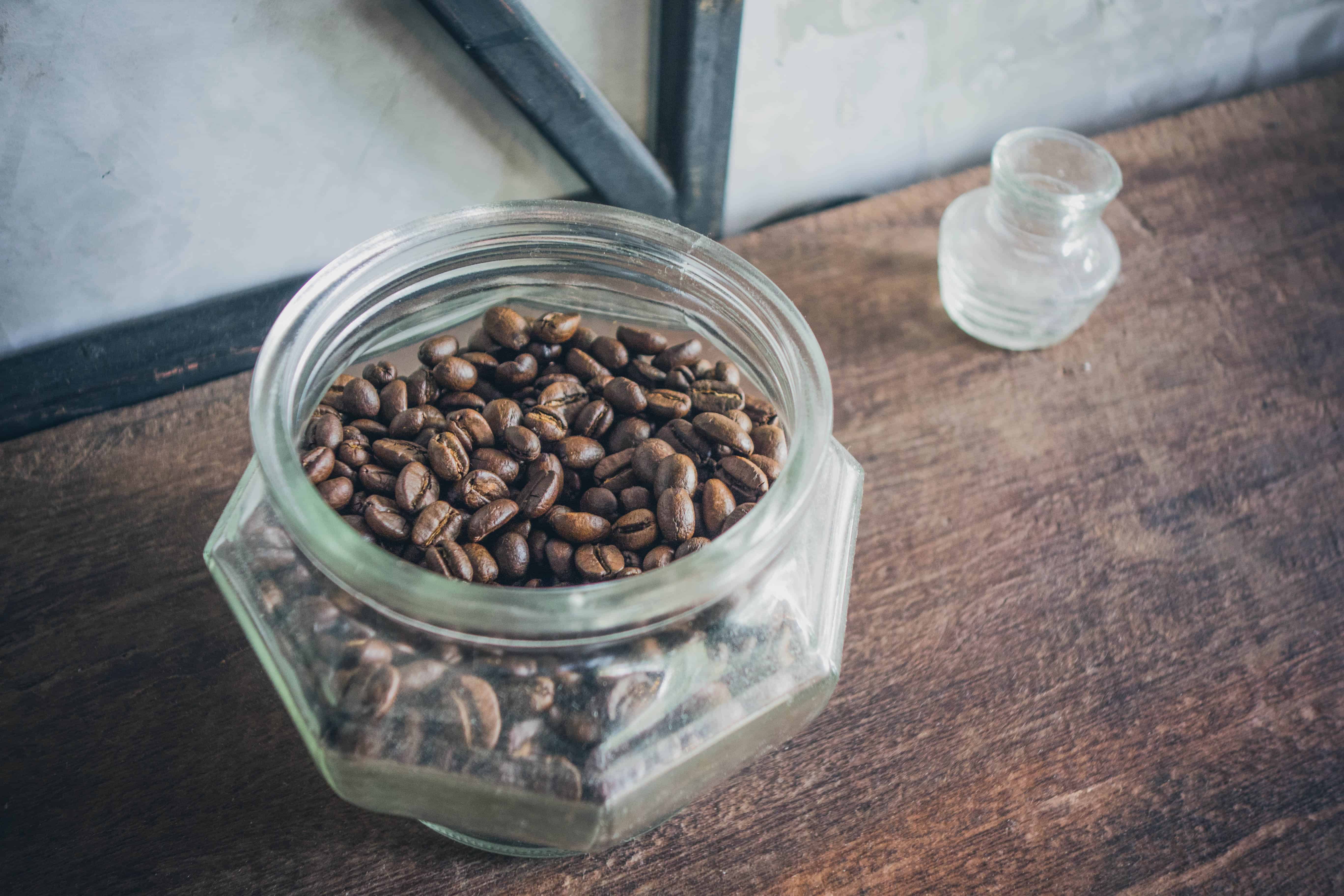
Fridges and freezers
If the milk has gone bad, then you can’t serve a good latte. In order to maintain the freshness of your coffee shop’s dairy products, you will need a refrigerator. Refrigerated display cases and bar fridges placed behind the counter are commonly used in a cafe.
It’s important to match these to your cafe’s design as well, especially if they will be visible to your customers. So, try to pick ones that go with the overall vibe and don’t stand out like a sore thumb. Similarly, you may also need freezers in the back (and possibly behind the counter) to store frozen foods.
Takeaway cups
A large portion of your cafe’s order will likely be take away, regardless of whether you offer in-house dining or not. So, be sure to invest in plenty of takeaway cups and paper bags to make sure customers can take their orders away with them.
Ovens and toasters
If your cafe is offering hot food, you’ll need a reliable way to serve it fast. Most coffee shops serve bagels, breakfast sandwiches, or pastries in addition to the main drinks, which means you might want to invest in either a conveyor toaster or a pop-up toaster for your cafe.
You might also need a commercial oven in the back if you bake your own bread or other products in-house.
Blenders
Besides coffee, smoothies are an incredibly popular drinks order at a cafe. And to produce mass smoothies, you’ll need to invest in an industry-grade blender.
Expect to pay a good chunk of money for the best blenders. But you can also expect them to be well worth the price when your store starts making hundreds of frozen drinks daily. You certainly won’t want to buy a cheap product that is only likely to last 6 months.
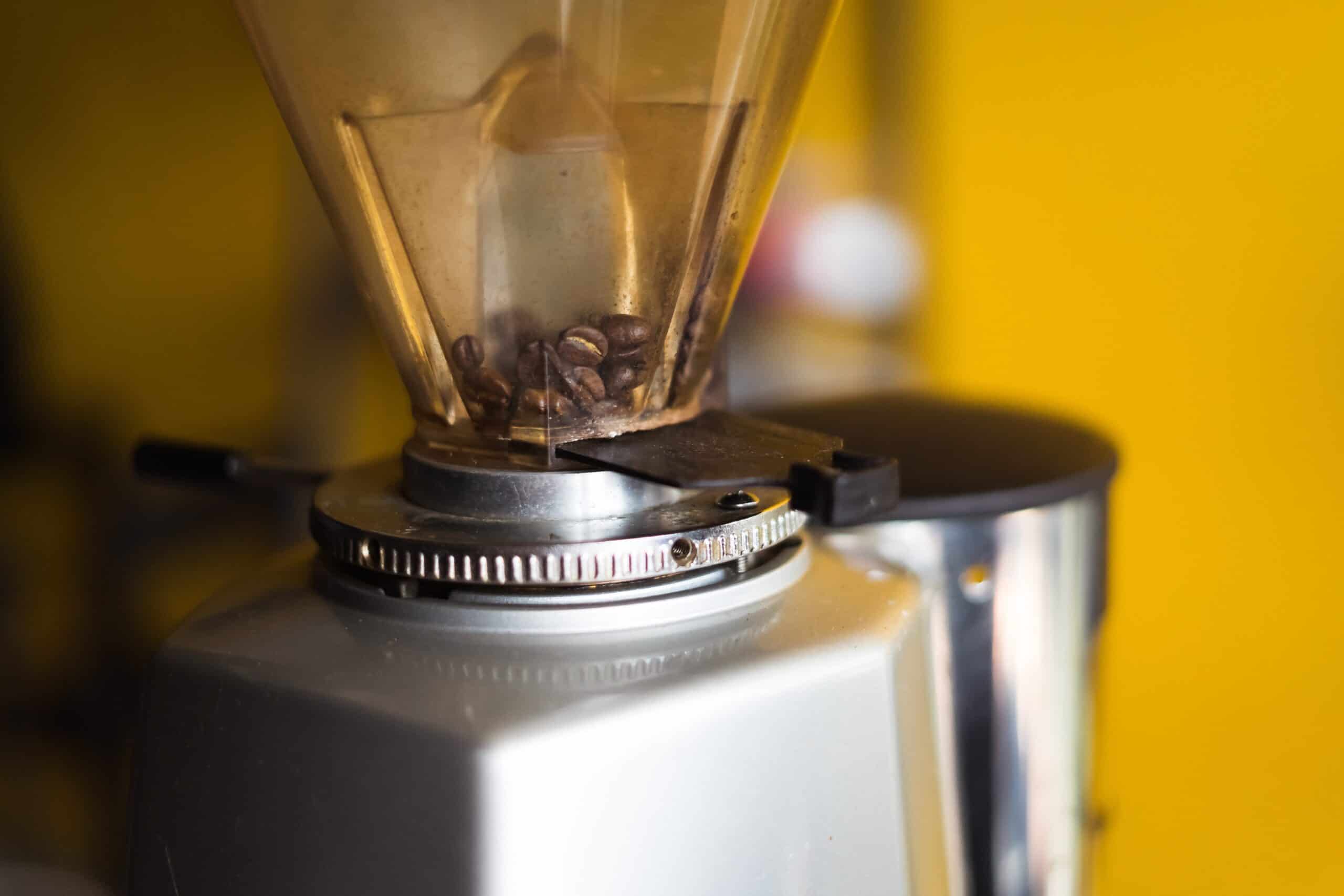
Shelving
If you’ve ever been to a coffee shop (which I’m guessing you have), you may have seen the shelves at the back beautifully decorated with flavored syrup bottles, artfully placed boxes of coffee beans, and colorful cups. This is one of the reasons shelving is so important.
But, of course, shelving isn’t just for decoration. It’s also going to be key for storing your ingredients, crockery, and glassware.
Find the Best Suppliers
One key component of a successful business is finding reliable suppliers. There are many items that you need to supply your café. These include coffee, milk, bread, fresh produce, and groceries. But, you’re also going to need cups (paper and porcelain), napkins, coffee stirrers, teapots, different types of syrup, and more.
To find the best suppliers, start by listing the types of supplies you need. Be detailed in your description so that, when you come back to this list, you know exactly what you are looking for.
Don’t be overwhelmed if you end up with pages and pages; digging deep will ensure that you’ll be getting the best quality products for the best price. The next step is to search for suppliers who work with your cafe’s philosophy, market, and budget.
Create a Menu
Now, it’s time to create your menu! Your menu should reflect your cafe’s vision, themes, and what you stand for – for example, if you’re all about sustainable products, your menu should reflect this. You’ll also need to consider all types of food options and dietary requirements – vegetarian, vegan, gluten-free, allergies, and religious diets.
You should also consider how much your ingredients cost and how long they will last you. The ultimate goal here is to be profitable, so, no matter how tasty they look, don’t pick overly expensive ingredients or items that customers aren’t likely to order. As a guideline, the wholesale cost should be no more than 35% of what you charge for your product.
It’s also important not to try to please everyone. This could also leave you with wasted products that nobody orders, and, as a result, wasted money.
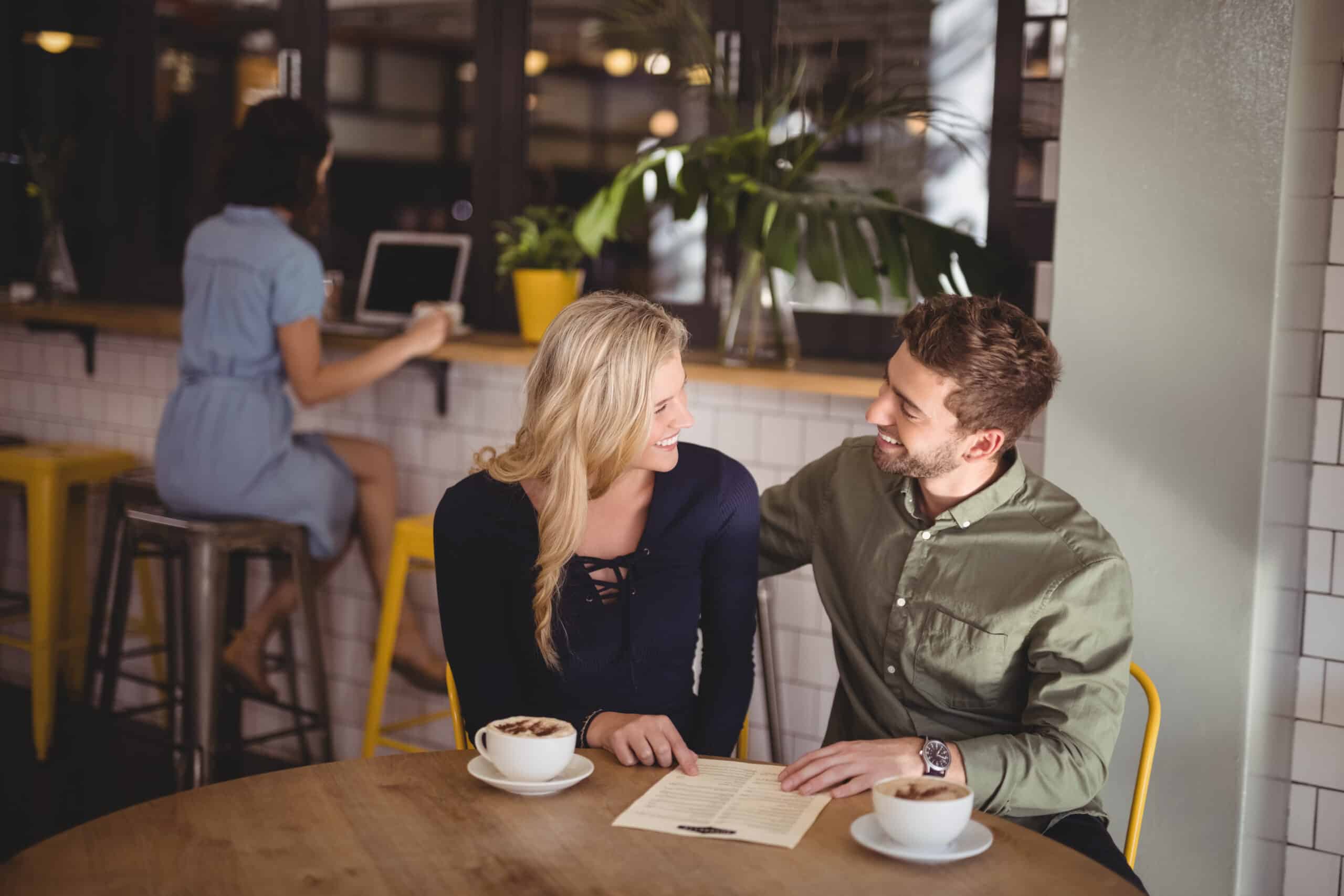
When creating your menu, start with a few dishes you KNOW you want to serve, then branch out from there. You’ll want to create about 10-12 delicious offerings that will make people’s mouths water.
Here are a few things to keep in mind when creating your menu:
- Keep it simple – offer foods that can be made well by just one person at a time.
- Make sure all, or most, food is suitable for “take away” or delivery orders as well.
- Unless you have a fully functional kitchen, avoid complicated cooking processes. Instead, bake, toast, or microwave if possible.
- Include an assortment of desserts and sweet treats to please everyone’s palate.
Price your Products
After you’ve decided on your menu, it’s time to price each dish. To do this, consider how many ingredients are used in a dish and how complex the dish is to prepare. The more labor-intensive a dish is, the higher its price should be; likewise, if one of your dishes takes a lot less effort than others then price it accordingly.
The success of your cafe might depend largely on how well-priced these items are – if you seem overly pricey, people will avoid you, but if you go too cheap, you could lose profit.
Find your USP
Every new business needs to find something that will make them particularly appealing to customers. So, think about why people should visit your cafe.
What makes you unique? What makes you special? Why should people choose you instead of Starbucks?
This will be your USP or Unique Selling Point. It will be what makes you stand out from the crown.
This could simply be your theme. Or it could be something deeper, such as an aspect of your menu (perhaps you only buy from local businesses), a service you offer that other businesses in the area don’t (such as delivery), or the fact that you offer healthy options or specialize in catering to those with dietary requirements.
Either way, your USP could end up bringing you a lot of specific businesses, so make sure this appeals to your target audience.
Hire Staff
Your cafe will almost certainly require staff members to work alongside you. Finding and keeping the right people for your business will be essential to its success. You’ll need people that both fit the culture you want to create, have the correct experience, or are willing to learn, and have the right attitude.
As a small business owner, the people you hire will affect how your customers feel about their experience in your cafe. So picking the right people is essential.
You’ll most likely need a skilled barista, someone to work the tills, someone to wait on tables (if you have in-house dining), and a chef in the back to manage the cooking and hot meals (if you are offering these). Although you may be able to combine a few of these roles.
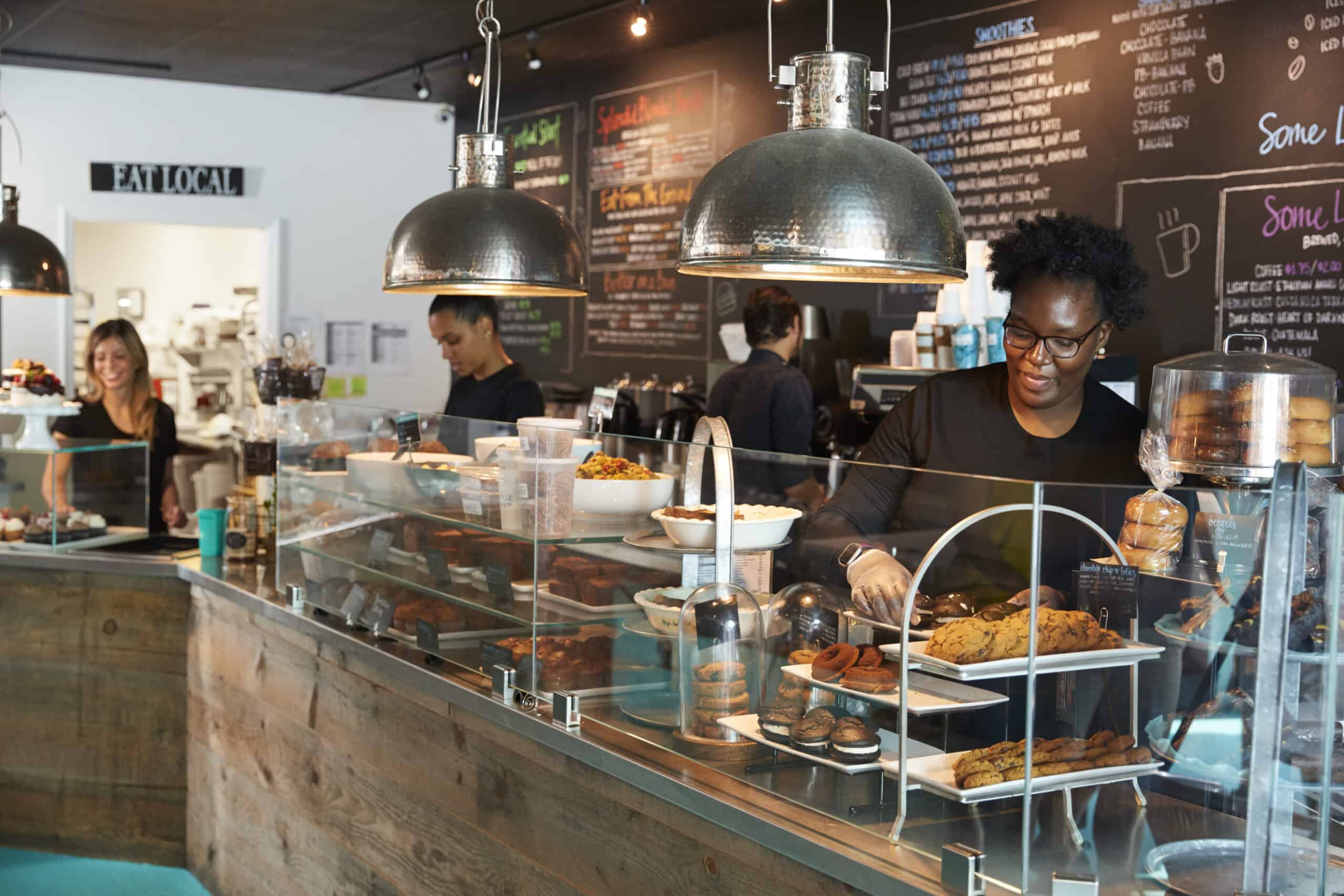
Market your Cafe
Lastly, you’ll need to market your cafe and build up a buzz around what you’ve acheived. But don’t think you have to start marketing when you first open your doors. As a matter of fact, marketing can start months before the grand opening.
The time leading up to the opening can be a great time to build your network and create connections. Both social media and word of mouth are wonderful channels to put your message out there and let people know what sort of business you are.
But you’ll also want to make sure you:
Research the competition
Investigate the current market. Are you the only person with a cafe in that area? If not, what are your competitors up to? How does their brand differ from yours? Once you know the type of cafe you want to start, it will be easier to figure out what marketing strategies are best for it.
Analyze the market
Summarise your market research. This analysis should include information such as the average income in your city and the price of a single cup of coffee at nearby cafes.
Decide how you will advertise
Budget is one of the criteria on which your advertising strategy hinges – huge television ads will likely be unrealistic for a small start-up, but a Facebook ad will be entirely possible. Plus, traditional techniques for marketing still work – placing ads in local newspapers, distributing flyers to people’s homes, and posting signs outside.
Utilize social media
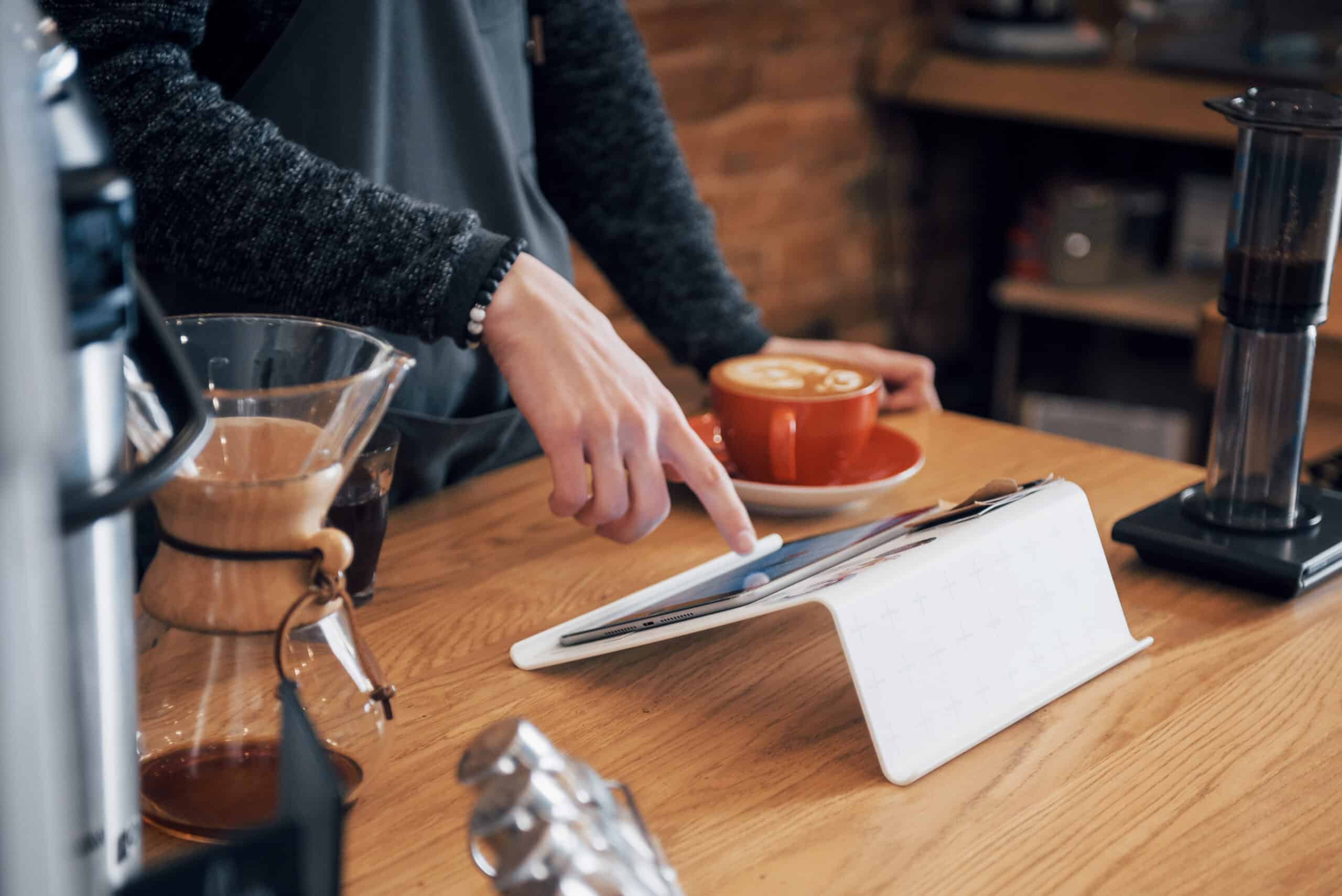
You don’t want to forget about social media. A large portion of your target audience likely hangs out there and social media can grow your business exponentially when used well.
Make sure to post pictures of your products, client reviews, and even testimonials from staff to social media. Beyond providing a space for your customers to enjoy your specialty coffee, you will also get to connect with them and receive feedback from those who are satisfied as well as room for improvement.
Use Google
SEO should be another important part of your advertising strategy. Make a Google My Business account, and work hard to get your business to page one.
Reach out to other businesses
Remember what I said about building your connections early? A great way to start out is by reaching out to local businesses and asking how you can work together. There are many ways businesses can collaborate, from sticking a flyer on their door to holding internal pop-up events.
Open the Doors
Finally, after months of planning, decorating, and strategy meetings, you’re ready to open the doors to your brand new cafe. What a wonderful moment, but, unfortunately, the hard work doesn’t end here. Now, you need to keep that momentum, build your brand, and create loyal customers. And a great way to do this is to snag them from the word ‘go’.
Consider holding promotional offers, discounts for the first hundred customers, or other types of incentives to get people through the door. If they like what they see, you’ll hopefully gain your first few regulars from day one.

FAQs
Question: How much money do I need to start a cafe?
Answer: The answer to this question really depends on the type of cafe you’re opening and how much it will cost.
If your goal is something simple like a coffee stand or truck, then you should be able to start with as little as $5000.
However, if your idea is more ambitious, such as building an entire bakery from scratch or designing a space that resembles a modern-day Starbucks, well, those ideas could require tens or even hundreds of thousands in upfront funding.
Typically, you’ll likely be looking at between £20,000 to £100,000, depending on your design and the type of cafe you want to start.
Question: Where can I find suppliers for my new business?
Answer: There are many different places where you can purchase everything needed for starting and running a successful cafe. Start is by looking at local stores first – be sure to check commercial grate catering stores which will have plenty of supplies.
If you’re looking for supplies online, I recommend checking out Amazon first. They have an extensive list of suppliers (both large and small) who sell everything needed for running your new cafe business: coffee machines, espresso machines, food slicers, blenders, and all kinds of stuff. Aside from that, try Nisbets, or even going directly to the brands like Rational.
Question: Can you open a cafe with no experience?
Answer: Yes, you don’t need heaps of catering or business management experience to start a cafe. In fact, everything you will need to know you can usually learn from blog articles, taking courses, or speaking to someone who already owns a cafe about how they got started.

